Ujwal Narayan
Task Adaptive Pretraining of Transformers for Hostility Detection
Jan 09, 2021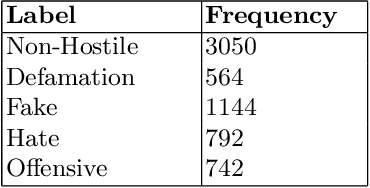

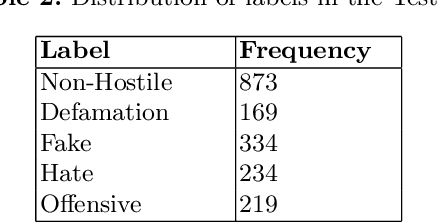

Abstract:Identifying adverse and hostile content on the web and more particularly, on social media, has become a problem of paramount interest in recent years. With their ever increasing popularity, fine-tuning of pretrained Transformer-based encoder models with a classifier head are gradually becoming the new baseline for natural language classification tasks. In our work, we explore the gains attributed to Task Adaptive Pretraining (TAPT) prior to fine-tuning of Transformer-based architectures. We specifically study two problems, namely, (a) Coarse binary classification of Hindi Tweets into Hostile or Not, and (b) Fine-grained multi-label classification of Tweets into four categories: hate, fake, offensive, and defamation. Building up on an architecture which takes emojis and segmented hashtags into consideration for classification, we are able to experimentally showcase the performance upgrades due to TAPT. Our system (with team name 'iREL IIIT') ranked first in the 'Hostile Post Detection in Hindi' shared task with an F1 score of 97.16% for coarse-grained detection and a weighted F1 score of 62.96% for fine-grained multi-label classification on the provided blind test corpora.
Leveraging Multilingual Transformers for Hate Speech Detection
Jan 08, 2021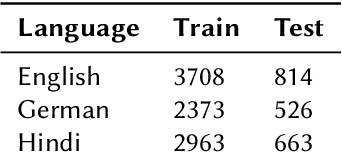
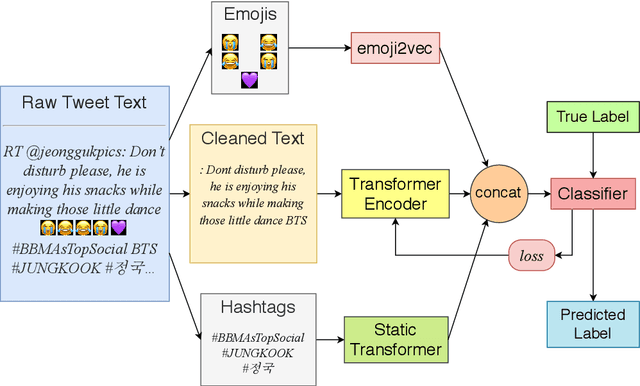
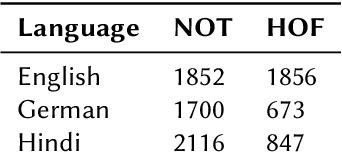

Abstract:Detecting and classifying instances of hate in social media text has been a problem of interest in Natural Language Processing in the recent years. Our work leverages state of the art Transformer language models to identify hate speech in a multilingual setting. Capturing the intent of a post or a comment on social media involves careful evaluation of the language style, semantic content and additional pointers such as hashtags and emojis. In this paper, we look at the problem of identifying whether a Twitter post is hateful and offensive or not. We further discriminate the detected toxic content into one of the following three classes: (a) Hate Speech (HATE), (b) Offensive (OFFN) and (c) Profane (PRFN). With a pre-trained multilingual Transformer-based text encoder at the base, we are able to successfully identify and classify hate speech from multiple languages. On the provided testing corpora, we achieve Macro F1 scores of 90.29, 81.87 and 75.40 for English, German and Hindi respectively while performing hate speech detection and of 60.70, 53.28 and 49.74 during fine-grained classification. In our experiments, we show the efficacy of Perspective API features for hate speech classification and the effects of exploiting a multilingual training scheme. A feature selection study is provided to illustrate impacts of specific features upon the architecture's classification head.
 Add to Chrome
Add to Chrome Add to Firefox
Add to Firefox Add to Edge
Add to Edge